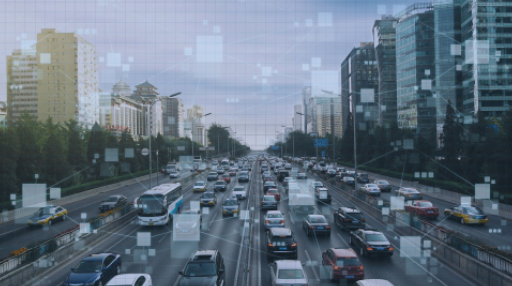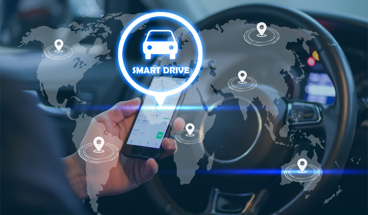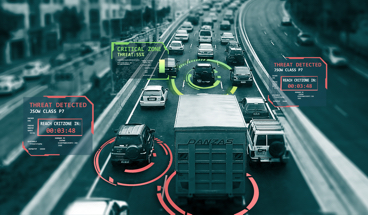
In 2022, China will continue to lead the world's most innovative and disruptive auto market. Focusing on the Chinese market, the penetration of new energy vehicles continues to exceed expectations, driving the leap-forward development of a multi-integrated energy-supplying network; local travel service providers and ecological partners integrate across borders, and continue to explore the implementation of scenario-based ecological cooperation.
In addition, under the effective prevention and control of the epidemic, great progress has been made in the long-distance travel of residents, the three-in-one three-dimensional transportation system of the city, and the intelligent construction of the transportation system. The latest progress in promoting the evolution of China's automotive ecosystem.
For the energy supplement system (EV Charging)
The development of the new energy market is accelerating, and the multi-integrated energy supplementation system of "vehicle-pillar-station-people-cloud" is gradually taking shape
In 2021, China's electric vehicle market will make another significant breakthrough, and the annual penetration rate of new energy passenger vehicles is expected to exceed 15%. The negative impact of the epidemic is gradually easing, and the policy support and coverage area for the construction and operation of energy-replenishing infrastructure are expanding. In 2021, there will be more than 1 million public charging piles in the country, and the proportion of high-power DC fast charging piles will exceed 40%, which will continue to lead the global development and further improve the guarantee capability of energy-replenishing infrastructure services.
Looking to the future, it can support the product ratio of battery-swappable models, the integrated energy management service solution of optical storage and charging, orderly charging, new technology applications of vehicle-network interaction (V2G, distributed energy storage), and intelligent integration based on "Internet +" The development trends such as platforms are relatively clear, and a multi-integrated energy supplementation system of "vehicle-pillar-station-people-cloud" will also be gradually formed.
For Mobility and Autonomous Driving (Rbcab)
Cross-border integration of travel service providers and ecological partners to jointly explore scenario-based ecological cooperation and sustainable business models
China is one of the most innovative and disruptive major auto markets in the world. Chinese consumers' interest in autonomous driving and mobility, development expectations and confidence in safe operation are far higher than those of European and American consumers; The respondents have the most positive perception of this, and they are more active in participating in various testing experiences and early adopters.
Throughout 2021, leading mobile travel service providers will refine application scenarios and promote the maturity of "scenario-based ecological cooperation": with the help of ecological partners (such as OEMs, logistics and distribution companies, catering and new retail companies, etc.) The first implementation of internal commercialization, to jointly explore sustainable business/profit models, and ecological partners will use their deep accumulation in the mobile Internet and business model practice to empower automotive ecological services.
At the same time, epidemic control has promoted the operation and implementation of services in some closed scenarios in the Chinese market, such as unmanned delivery, mobile meals and mobile retail.

For long distance travel service (LngHaulMbility)
The rise of online communication methods superimposed on epidemic prevention and control continues to affect residents'/enterprises' willingness to travel long distances in the post-epidemic era
Benefiting from effective epidemic prevention and control, China has become one of the first regions to resume normal social operations. Compared with Europe and the United States and other regions more affected by the epidemic, the long-distance travel demand of Chinese residents is the least affected by this, but the maximum acceptable travel distance (including domestic and overseas) is still nearly 20% shorter than before the epidemic.
After the epidemic, Chinese residents' preference for travel by passenger car increased, while their preference for airplanes decreased, but the overall preference difference did not change much compared with residents in Europe and the United States. National and local prevention and control policies, travel management and control of affiliated units, the rise of online communication methods, environmental considerations, budget constraints, etc. have become the main influencing factors restricting official and private travel.

For Urban Air Mobility (UrbanAirMbility)
The application scenarios of "carrying objects" and "carrying people" are becoming more and more mature, and exploring the new urban three-dimensional transportation system of "air-ground-underground" trinity
Driven by the development of new energy, vertical take-off and landing, and unmanned driving, the breakthrough in the development of China's urban three-dimensional transportation system will focus on the application scenarios of "carrying objects" and "carrying people", providing services for logistics transportation, medical rescue, Modern agriculture and other industries are empowered to help traditional industries transform and upgrade to high-end and intelligent. The improvement of regulatory policies, technological innovation and business model innovation will be the three core influencing factors to promote my country's urban three-dimensional transportation from concept pilot to large-scale implementation.
At present, my country's urban three-dimensional transportation is still in its infancy. Benefiting from the development of China's express logistics and takeaway industry, it is committed to taking the lead in solving the "cargo" scene of the terminal distribution needs of Chinese residents' cities, providing enterprises with more efficient and reliable services. logistics operation mode. For the "manned" application scenario, its convenient and efficient advantages will be beneficial to alleviating the traffic congestion problem in large cities in the process of China's urbanization construction.
In the future, urban air transportation will help the construction of a new comprehensive transportation system of " air - ground - underground " trinity, complementing and linking with surface road transportation and underground rail transportation.
For smart city transportation system (SmartCity)
The intelligent construction of the urban transportation system is accelerated, and the government 's regulation of urban transportation efficiency and the allocation of transportation resources are becoming more and more precise.
In 2021 , as the first year of the " 14th Five-Year Plan " , many places responded to the call of the government and policies, released smart city strategies intensively, continued to promote the continuous development of smart transportation systems, cloud platforms and computing, and continuously improved the evaluation indicators of smart cities. The service level of the city has been continuously improved and the vehicle-road coordination ability has been continuously enhanced. At present, the construction of China's smart city transportation system mainly focuses on first- and second-tier cities, and will gradually descend to small and medium-sized cities in the future to enhance urban innovation and competitiveness. Driven by the construction of the smart city transportation system, Chinese residents will minimize the " commute time " , and the government's fine control and precise control of urban transportation will be further improved, so that the four elements of people, vehicles, roads and the environment will be coordinated. run.
Article data source: roland berger





